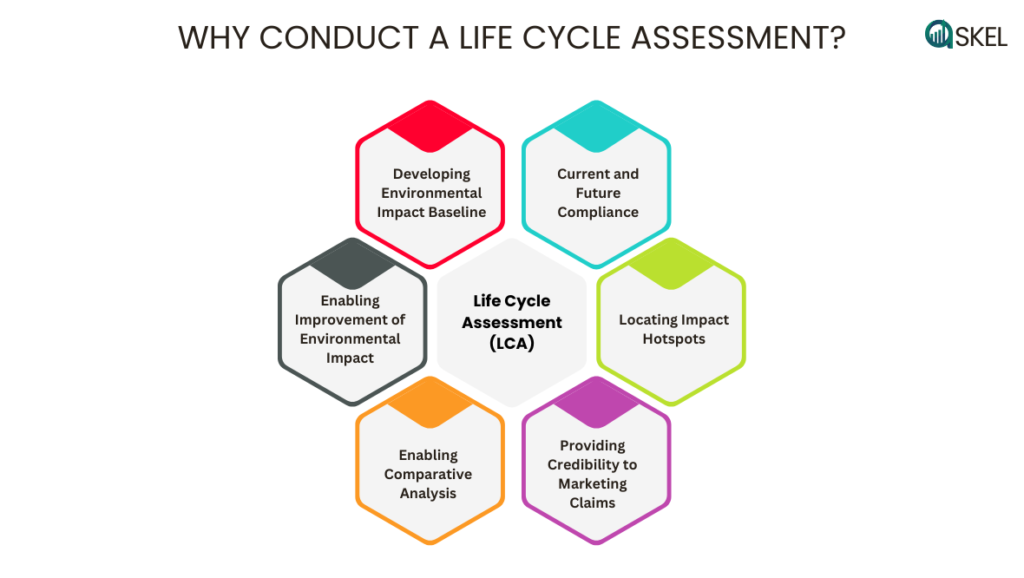The Purpose Behind Life Cycle Assessment (LCA): A Guide

Gain an understanding of the purpose behind conducting life cycle assessment (LCA) studies and the insights they offer for businesses.
Have you ever wondered about the environmental cost of the things you use every day? From the clothes you wear to the food you eat, every product and service has an environmental footprint. Life Cycle Assessment (LCA) is a powerful tool that quantifies this hidden cost, providing a comprehensive analysis of a product’s impact on the environment throughout its entire lifespan.
Think of LCA as a journey that follows a product from its cradle – the raw materials used in its creation – to its grave – its disposal or recycling. This journey takes into account everything from the energy used to extract those raw materials to the emissions generated during manufacturing, transportation, and use. By mapping these environmental exchanges, LCA paints a clear picture of a product’s true environmental footprint.
This information is invaluable for businesses. They can use LCA to identify the environmental impact of their products and services, identify areas for improvement in their products and supply chains, and use this information for minimizing their environmental impact.
Providing a Baseline of Environmental Impact
To navigate effectively, you need a starting point and a map. Similarly, LCA establishes a crucial baseline for understanding a product’s environmental impact. By systematically accounting for all the environmental exchanges – including resource use and emissions – across a product’s life cycle, LCA creates a comprehensive picture.
Having this data readily available empowers businesses to identify areas where environmental burdens are most significant. Is it the energy-intensive manufacturing process? Perhaps it’s the transportation methods used to deliver the product. With this knowledge, businesses can focus their sustainability efforts on these critical areas, optimizing processes and exploring alternative materials or transportation options.
Locating Potential Environmental Impact Hotspots
Think of a product’s life cycle as a chain. While some parts of the chain may have a relatively low environmental impact, others might be major contributors. LCA pinpoints these critical links by analyzing each stage of the product’s life cycle. Identifying these hotspots empowers businesses to make strategic changes and targeted choices to improve environmental impact.

Facilitating Improvement in Environmental Impact
By providing a clear picture of a product’s environmental footprint and pinpointing areas for improvement, LCA empowers businesses to make informed decisions that minimize their environmental impact.
Additionally, LCA allows businesses to track the effectiveness of their sustainability efforts. By conducting follow-up LCAs after implementing changes, they can measure the environmental impact reduction and identify areas for further improvement. This continuous cycle of assessment and action forms a fundamental part of the achievement of long term sustainability goals.
Comparative Analysis between processes/product choices
Life Cycle Assessment (LCA) facilitates informed decision-making through comparative analysis. Imagine you’re a company considering two different manufacturing processes for a new product. Both might seem viable, but how do you choose the most environmentally friendly option? By conducting separate LCAs for each process, you can compare their environmental footprints side-by-side.
This comparative analysis can extend to product choices as well. Businesses can leverage LCA to compare the environmental impact of different product design choices. For instance, an LCA might reveal that a seemingly eco-friendly bamboo product actually has a larger footprint compared to a traditionally sourced wood product due to transportation distances.
Life Cycle Analysis can be used to identify impact hotspots within the life cycle of a specific solution – such as highlighting the stage in a product’s life that is particularly resource intensive or polluting – and then help assess how well different options for that part of the lifecycle address those impacts.
Life Cycle Assessment for the circular economy, The Ellen McArthur Foundation
Providing Credibility to Marketing Claims
In a marketplace awash with ‘eco-friendly’ claims LCA provides much needed credibility. While not a fool proof measure in itself (LCA’s are dependent on parameters as well as available data sources and their results can vary or be made favourable) an LCA study provides much needed evidence for any such claims and provide a possibility for scrutiny by stakeholders.
In addition LCA studies for products and services making marketing claims for lower environmental impact help protect against legal action against greenwashing. This is a growing phenomenon where more and more companies are being brought under the scanner for making false or misleading claims, leading to legal action in some cases.
Click to learn in detail about the Negative Effects of Greenwashing on Businesses
Compliance and Sustainability Reporting
As environmental regulations become increasingly stringent, LCA empowers businesses to stay ahead of the curve and mitigate compliance related risks. While most regulations are not LCA specific, those such as the EU Corporate Sustainability Reporting Directive (CSRD) require companies to make disclosures that can be backed by LCA studies.
Additionally LCA studies provide a significant amount of data relevant to products and services that is pertinent to sustainability reporting disclosures. This data helps stakeholders understand not only the environmental impact of a product or service but also track its improvement over time and the decisions the company has taken to make those improvements.


